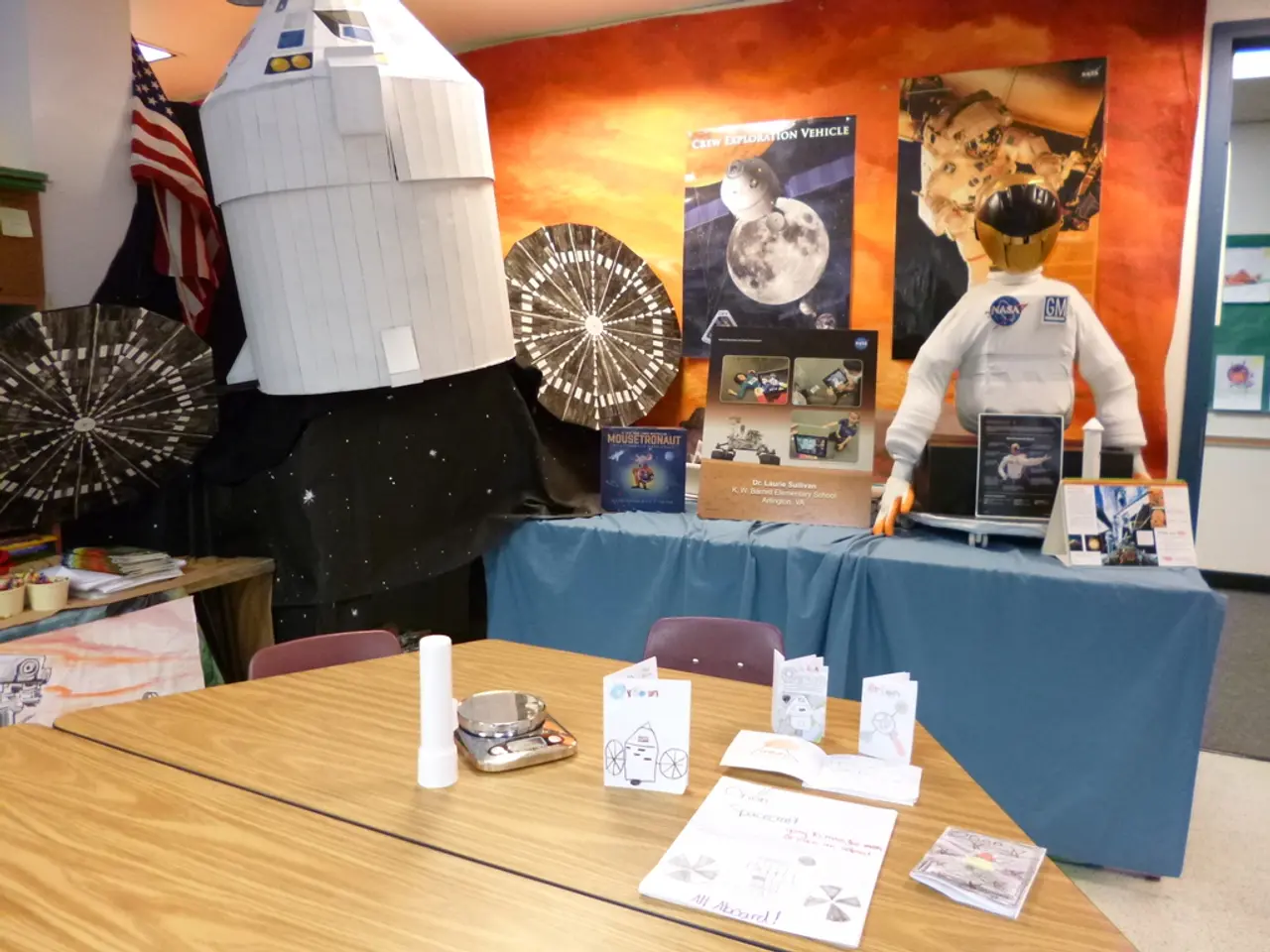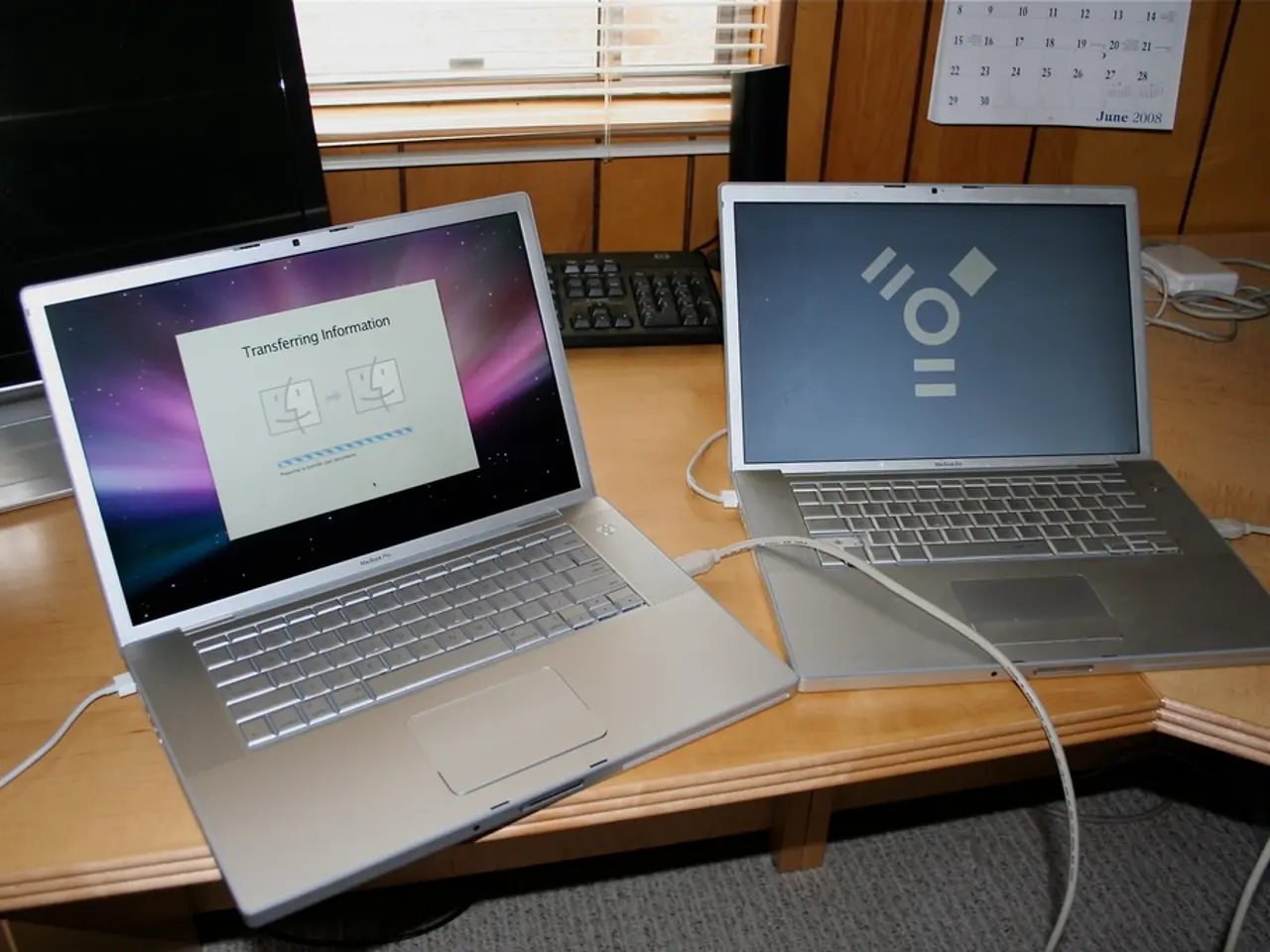Recent Developments in Asteroid Redirection Techniques
In the realm of space exploration, the focus on ambitious missions, such as asteroid redirection, has never been more intense. However, as scientists grapple with these ambitious endeavours, a crucial question arises: what is the environmental cost of our ventures into the cosmos, and how can we mitigate these impacts to ensure a sustainable future?
Recent successes in planetary defence have been heralded by NASA administrator Bill Nelson, who praised the DART mission as an unprecedented achievement [1]. The collision between DART and the asteroid Dimorphos significantly altered its trajectory, shortening its orbital periods around Didymos by about 32 minutes [2]. This marked the first real-world demonstration of asteroid deflection.
However, the environmental impact of space missions often goes unnoticed by the general public. A notable lack of awareness exists about the carbon footprint of space exploration and the nature of near-Earth objects (NEOs) [3]. Current technologies for mitigating threats from NEOs are primarily focused on detection, tracking, and deflection methods, with several potential methods being studied.
One such method is the kinetic impactor, which involves sending a spacecraft to collide with an asteroid at high speed, nudging it off its trajectory [4]. Another is the gravity tractor, which involves positioning a spacecraft near an asteroid for an extended period, allowing the spacecraft's gravitational pull to gradually alter the asteroid's course [5].
While these methods have shown promise, they face significant challenges, particularly with larger and faster-moving objects. Future technologies, such as gravitational tractors, laser ablation, and solar sails, offer potential for more effective and versatile deflection methods [6]. However, they are still in the conceptual or experimental phases.
The excitement surrounding space achievements often overshadows discussions about their ecological consequences. The launch of a single rocket can emit as much carbon dioxide as an average car does over its entire lifetime, with a typical SpaceX Falcon 9 launch emitting approximately 1,500 tons of CO2 [7]. The manufacturing process for rocket components often involves energy-intensive processes that can exacerbate climate issues further.
Moreover, asteroid redirection methods like kinetic impactors or gravitational tractors could inadvertently create additional fragments, contributing to the space debris problem. Unconventional ideas, such as solar sails and altering an asteroid's surface reflectivity, are being explored to address these challenges [8].
As we strive to protect our planet from potential asteroid threats, it is essential to weigh the environmental costs against the potential benefits and develop sustainable practices and technologies. Effective mitigation strategies often require global cooperation to ensure that actions are coordinated and maximally effective [9]. Overcoming the technological hurdles in developing and implementing new deflection methods will be crucial for successfully mitigating threats from larger NEOs.
References: [1] NASA (2022). NASA Administrator Bill Nelson's Statement on the Success of the DART Mission. Retrieved from https://www.nasa.gov/press-release/nasa-administrator-bill-nelson-s-statement-on-the-success-of-the-dart-mission [2] NASA (2022). DART Successfully Alters Asteroid's Orbit. Retrieved from https://www.nasa.gov/feature/dart-successfully-alters-asteroids-orbit [3] European Space Agency (n.d.). What are NEOs? Retrieved from https://www.esa.int/SpaceScience/What_are_NEOs [4] NASA (n.d.). Kinetic Impactors. Retrieved from https://nssdc.gsfc.nasa.gov/planetary/asteroids/methods/kinetic.html [5] NASA (n.d.). Gravity Tractors. Retrieved from https://nssdc.gsfc.nasa.gov/planetary/asteroids/methods/gravity.html [6] NASA (n.d.). Future Technologies. Retrieved from https://nssdc.gsfc.nasa.gov/planetary/asteroids/future_technologies.html [7] SpaceX (n.d.). Falcon 9 Rocket. Retrieved from https://www.spacex.com/rocket/falcon9 [8] NASA (n.d.). Solar Sails and Asteroid Redirection. Retrieved from https://nssdc.gsfc.nasa.gov/planetary/asteroids/solar_sails.html [9] United Nations Office for Outer Space Affairs (n.d.). International Cooperation. Retrieved from https://www.unoosa.org/oosa/en/ourwork/spacelaw/treaties/outerspace/cooperation.html
- Science and technology in space-and-astronomy, such as the development of new methods for asteroid deflection, are under the editorial spotlight due to recent achievements like the DART mission.
- However, the environmental impact of space missions, specifically the carbon footprint associated with rocket launches, is often overlooked by the public.
- Opinions about the sustainability of space-related activities are increasingly important as more advanced technologies like gravitational tractors, laser ablation, and solar sails are being studied for asteroid redirection.
- The spotlight on photography capturing the cosmos may sometimes overshadow the need for working towards eco-friendly space exploration practices, considering the high carbon emissions involved in a single rocket launch.




